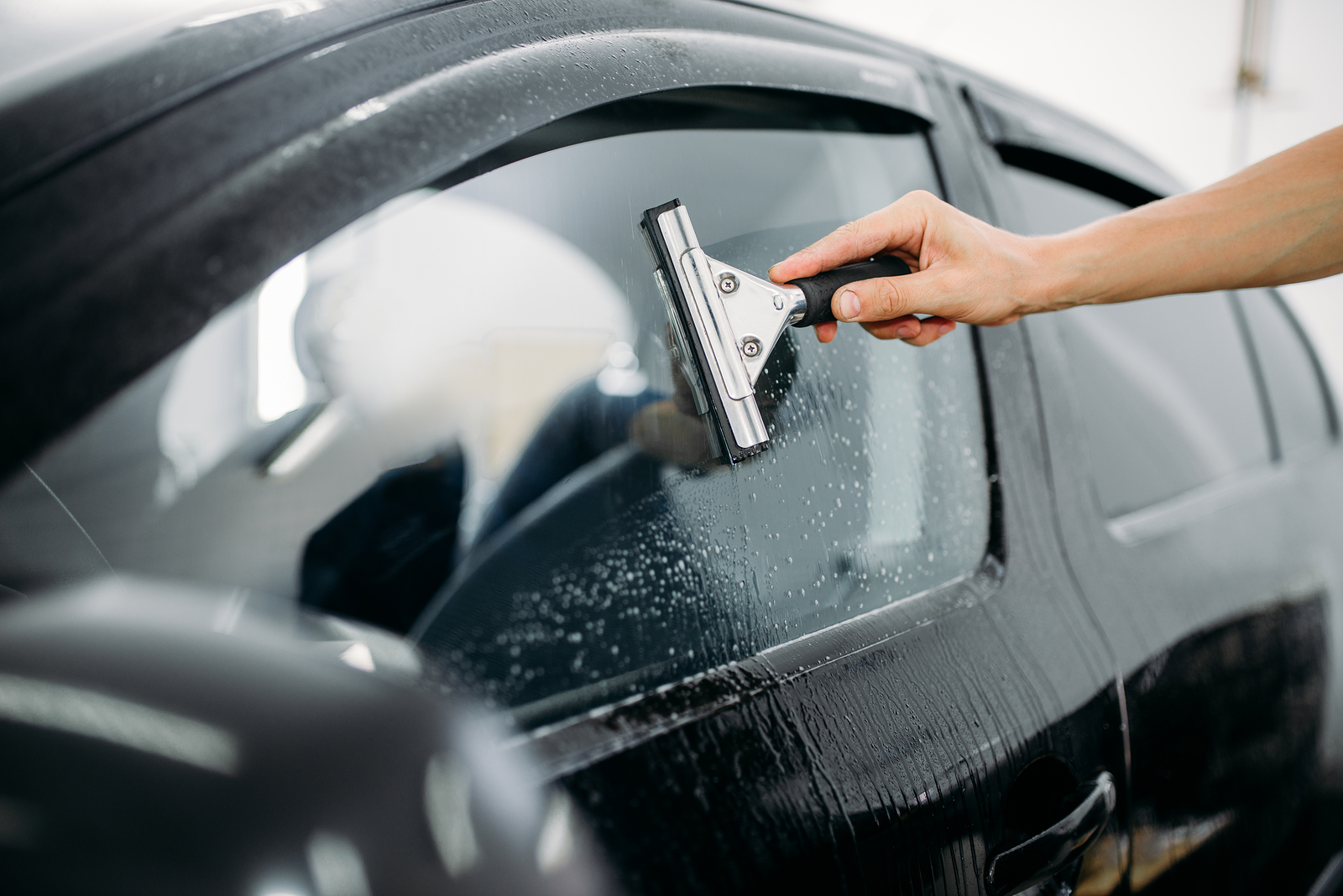
Window film overlays and other allowable modifications
#TINTED WINDOW CAR WINDOWS#
Replacement windows must also comply with approved standards. Windows originally fitted to vehicles will already comply, depending on the type and age of the vehicle. This is why glazing must comply with approved glazing standards or trade names, as indicated by markings on the glass.
#TINTED WINDOW CAR DRIVER#
Vehicle windows must have certain properties to ensure structural strength and good driver vision.

The repair invoice must state that the repairs comply with that standard. The standard specifies the types of damage, the limits to which they can be repaired and the repair methods. The law requires that any windscreen repairs must meet the requirements in the Australian Standard/New Zealand Standard 2366:1999 Windscreen Repairs.
#TINTED WINDOW CAR CRACK#
A small crack that can be repaired can quickly develop into a large crack that requires the windscreen to be replaced. When a windscreen is damaged, the damage should be repaired as soon as possible to prevent the damage from spreading further and affecting the driver's vision and the windscreen's structural strength. The glazing is structurally sound and securely fitted to the vehicle. The windscreen does not have any scratches, discolouration or other defects that impair vision through it The windscreen and front side windows are kept clean and unobstructed Glazing must be kept in good condition to ensure the driver can see through the windows clearly and can drive the vehicle safely. Safety requirements for vehicle windows (glazing) General safety requirements for windscreen wipe and wash systems and rear-view mirrors.

Window film overlays, stickers and other allowable modifications

Glazing standards and trade names that glazing must comply with, including requirements for glazing markings General safety requirements for vehicle windows (glazing) The purpose of the rule is to set out minimum safety levels to ensure that adequate vision is provided for the driver, and that glazing material is structurally sound and suitable for use in motor vehicles. The legal requirements for vehicle windows, wipers and mirrors are contained in the Land Transport Rule: Glazing, Windscreen Wipe and Wash, and Mirrors Rule 1999. If you’re interesting in having your windows wrapped, get in touch today on 01.Īlternatively you can call our freephone number on 08 or drop us an email on and a member of our team will get back to you as soon as possible.Guidance on some of the legal requirements relating to your vehicle's windows, wipers and mirrors. That’s because if you are involved in an accident or a thief smashes a window on your vehicle, the sticky film layer helps to hold any broken shards and sharp fragments together, making it much harder to break into your vehicle and much less likely that you will suffer from significant cuts during a collision. Last but not least, window glass tinted films are installed as an adhesive layer, and this has the added advantage of effectively turning the windscreen into safety glass. Remember that even when you’re not in your vehicle, if it’s parked outside its interior is still exposed to the sunlight, and over time this can bleach out the colours in the upholstery, leaving it looking faded.īy installing window tint films throughout your car, you cut out the wavelengths and the highest intensity of the brightest days – and that means the fabrics inside your vehicle should retain their original colouring and vibrancy for much longer. It’s a great way to keep the vehicle cooler in the summer, especially in the back of the car where the window tints can be darker – and it means less reliance on your air conditioning, which saves a little energy too. Tinted windows don’t just block out light, they also reduce the heat coming into the vehicle by blocking out infrared radiation. Here are five good reasons to have tinted windows in a car, which prove this is much more than just a fashionable fad… 1.

It’s important to get tinted window film professionally installed, as there are legal limits on how dark your windows can be, especially at the front of the vehicle where the driver’s visibility might be affected.īut there are plenty of good options to work around this too, for example the rear windows can be tinted much more, and it’s common to have a darker or coloured sunlight ‘visor’ strip across the top of the front windscreen. Tinted windows are an easy modification to any vehicle thanks to the availability of tinted window films, which can slightly darken the glass by reducing the amount of sunlight that passes through from outside.


 0 kommentar(er)
0 kommentar(er)
